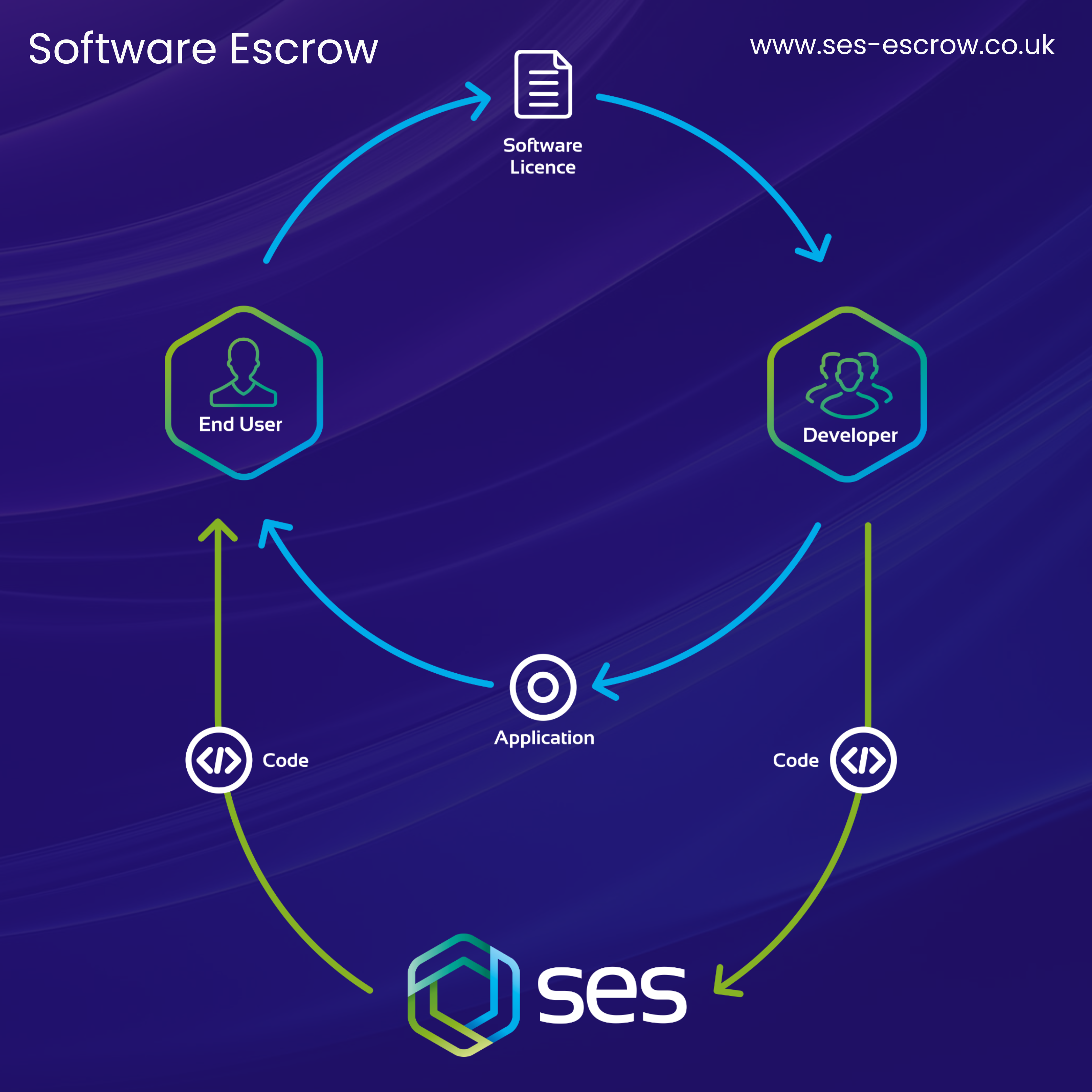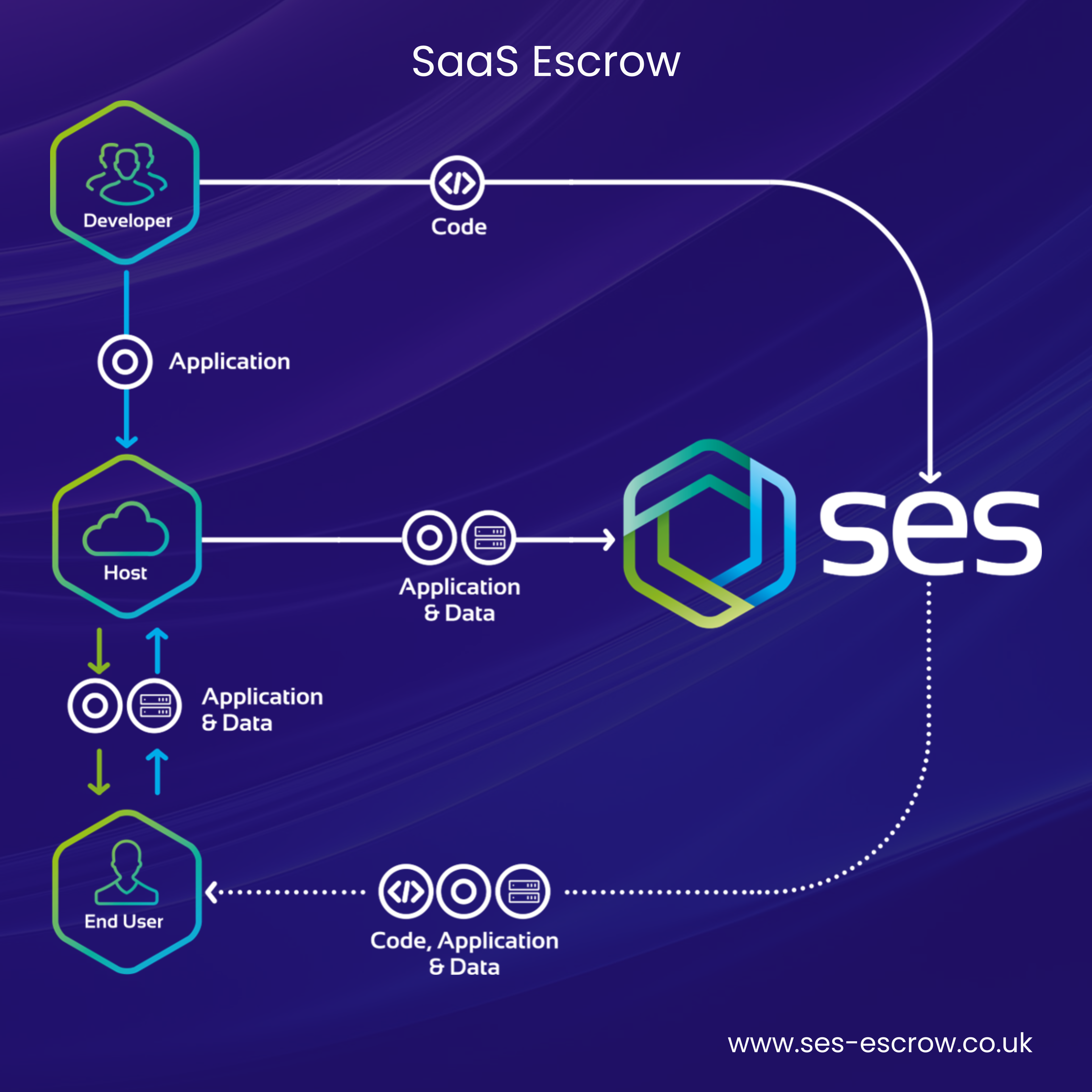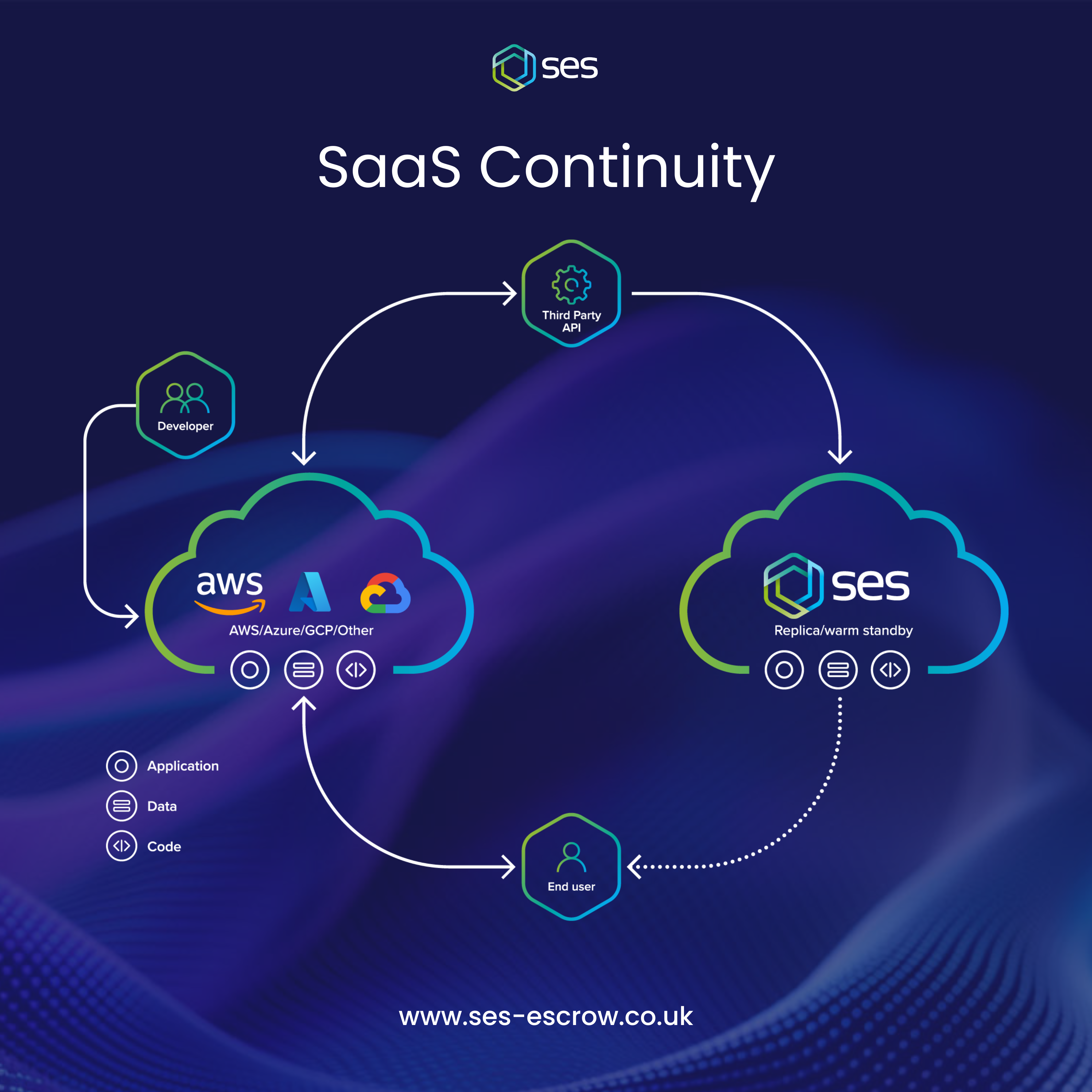The term ‘Escrow’ is widely used within a variety of different contexts, such as:
- Real estate.
- Online marketplaces.
- Freelance work.
Within these sectors, ‘Escrow’ refers to a financial arrangement where a third-party holds and regulates the payment of funds or assets between two parties involved in a transaction. Escrow ensures that both parties fulfil their obligations prior to a transaction being completed.
Now, it’s highly likely that you’re reading this particular blog for information and guidance on Escrow within the context of software risk. When it comes Escrow for Software, a concept which is also referred to as Source Code Escrow or Software Escrow, the role of Escrow is to optimise a company’s level of operational resilience and business continuity.
Alongside bolstering a company’s risk mitigation strategy, Source Code Escrow also provides them with peace of mind from knowing that they can effectively manage any disruption that comes their way, including events that are completely unprecedented.
What is a Source Code Agreement?
Software Escrow involves a tri-party source code agreement being put in place. The parties involved are a software provider, an end-user, and an Escrow provider, such as SES Secure.
This source code agreement, also known as a Software Escrow solution, is carefully designed and structured with the objective of mitigating against risk that may impact a software developer and as a result, cause a software application to not be accessible or operational to an end-user.
Within a source code agreement, a software application’s source code and other materials are deposited to an Escrow provider. Within SES’s testing processes, such materials are then tested to ensure that they are accurate and up to date before being securely stored.
A source code agreement also involves a set of pre-determined release conditions being established and agreed upon by all involved parties. When such conditions are met, source code and other materials are released by the Escrow provider to the end-user.
Example Scenario
To present the structure and role of Escrow for software, let’s put it into an example:
- An events company has placed a critical application which facilitates ticket buying in Escrow.
- The application’s software developer unexpectedly encounters maintenance issues, causing the events company to lose access and control over the ticket buying platform.
- As they have a source code agreement in place, they inform their Escrow provider that a release condition has been met. As a result, the Escrow provider release their source code and other materials and provide a means for them to regain operational access of the software application.
Within this example scenario, the presence of a Software Escrow solution not only re-equips the events company with access to their ticket buying software application, but it also safeguards against financial loss, damage to stakeholder relationships, and negative impact on the overall reputation of the company.
For first-hand insights on various client projects that we've completed, check out our case studies.
Escrow for Software in the Current Day
Software Escrow was initially introduced in response to the boom in software popularity during the 1980’s. During this period, alongside a growing usage of software was a growing level of concern around the risk faced by third-party software vendors.
Software Escrow was first brought in to safeguard software applications that were physically installed on the premises of a company. This type of Source Code Escrow, also known as traditional Software Escrow, is still popular in the current day. However, there are now other options out there too.

SaaS Escrow, also known as Cloud Escrow and SaaS source code Escrow is a solution that safeguards cloud-hosted software applications. Interestingly, whilst there is an immense level of value that’s offered by SaaS Escrow, there’s still a common misconception that SaaS applications don’t require Source Code Escrow. To learn more about this, check out our blog ‘SaaS Applications and Software Escrow – Can They Work Together?’.

At SES Secure, we also offer an instant disaster recovery service for critical cloud-hosted software applications. This service is known as ‘SaaS Continuity’. Within a SaaS Continuity agreement, the team at SES Secure take on the full responsibility for recovering a system following a disaster event, making it not only truly innovative, but also exceptionally convenient.
Want to learn more about SaaS Continuity? Check out our blog – ‘SaaS Continuity – Disaster Recovery for Cloud-Hosted Applications.’

Do You Require Source Code Escrow?
For over 25 years, we’ve supported companies of all sizes and statures from across all sectors with the implementation of Escrow for software.
We currently have over 200 verified customer reviews on Feefo – check them out here.
To directly speak with a member of our team, please don’t hesitate to get in touch.